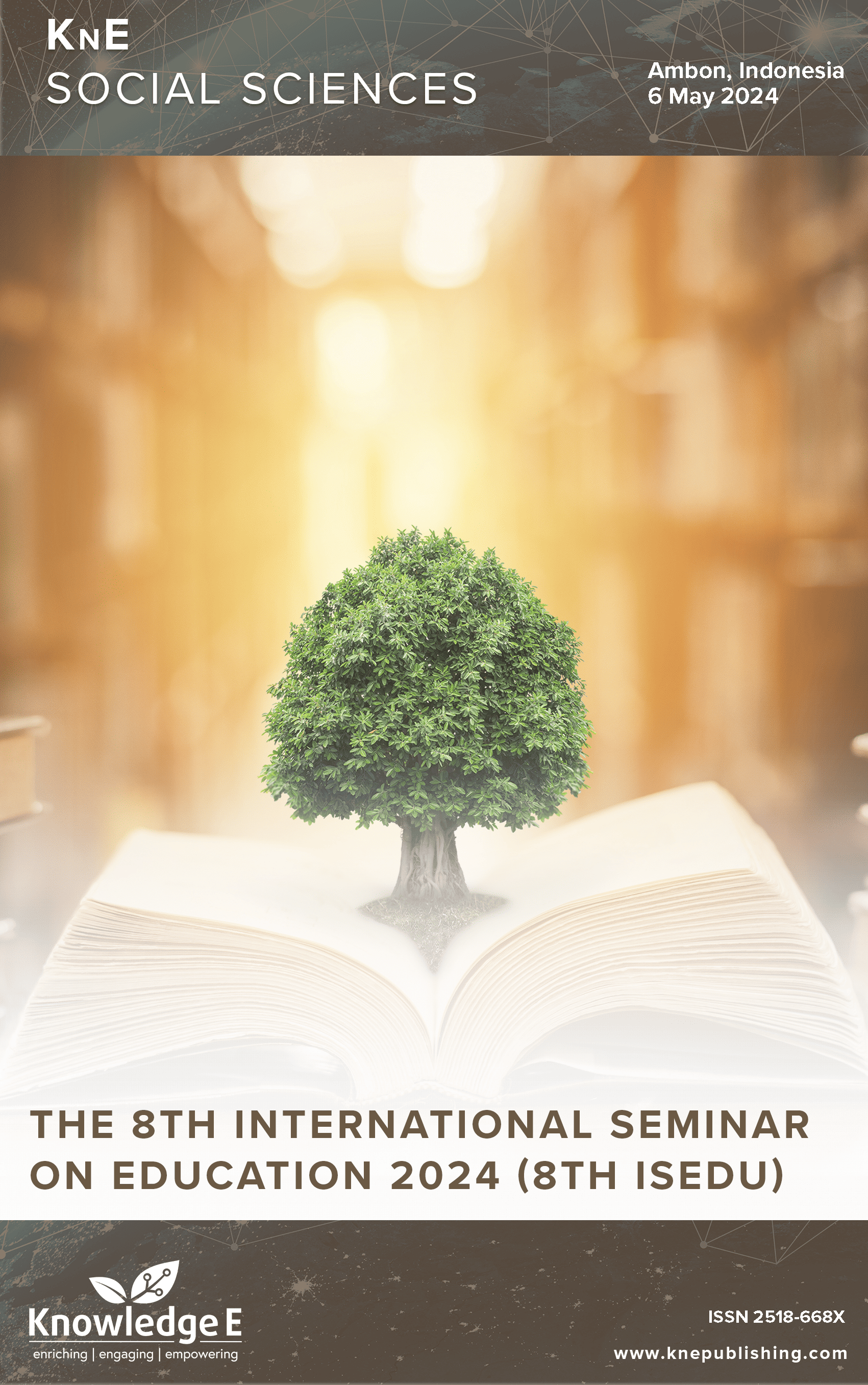A Culture of Chain Mobility Among Small Islanders: A Case Study of Lease Islanders' Mobility to Ambon City
DOI:
https://doi.org/10.18502/kss.v9i31.17614Abstract
People who live in the archipelago have a high mobility culture. The life of the people makes the island not a separator from the mainland, but the island is believed to be an inseparable part. Land and sea become one unit of life for people living on small islands. Therefore, mobility is also part of their lives, so the sea is not a barrier to their mobility. This research aims to explain the cultural process of chain mobility of Lease Islands residents to Ambon City. The research method used is the case study method because this research aims to reveal the behavior and cultural process of chain mobility of island communities. This research uses a single case study method. The number of case units in this study was 7 case units. The results showed that the migrant network in the destination area is one of the critical factors and is very influential in the migrant's decision to migrate or stay in origin. The network of previous migrants who have formed in the city is one of the factors that determine the continuity of migrants to stay in the destination area. This lengthy process of mobility creates intergenerational mobility. It is shown by the existence of clans from the Lease Islands found also in Ambon City. The clans have developed and come from generations whose sequence is no longer known, only known from the name of the clan that follows it. The facts on the field show that mobility is a way of life for islanders. Observations in origin also show that almost every family has family members who live outside the island, especially in Ambon City.
Keywords: hain mobility, culture, small Island, lease
References
Balian AG. Social Capital: the Crucial link for optimizing the impact of human capital. Int. J. Soc. Sci. Hum. Res. 2023;06(04):1997–2005. DOI: https://doi.org/10.47191/ijsshr/v6-i4-01
Aminudin N, Jamal SA. Social capital and economic mobility in tourism: a systematic literature review. Cogent Soc Sci. 2024;10(1):1–16. DOI: https://doi.org/10.1080/23311886.2024.2321665
Cwick JM. Gender and incarceration as coercive mobility: a theoretical model of effects on women’s forms of capital and informal social control. J Crime Justice. 2020;43(2):245–61. DOI: https://doi.org/10.1080/0735648X.2019.1653215
Salom ao Filho A, Kamp A. Performing mundane materiality: Actor-Network Theory, global student mobility and a re/formation of ‘social capital,’. Discourse (Abingdon). 2019;40(1):122–35. DOI: https://doi.org/10.1080/01596306.2018.1549708
Bhandari H, Yasunobu K. What is social capital? A comprehensive review of the concept. Asian J Soc Sci. 2009;37(3):480–510. DOI: https://doi.org/10.1163/156853109X436847
Krafft AM, et al. Trust. Social Support and Hope Resources; 2023. https://doi.org/10.1007/978-3-031-24412-4_6. DOI: https://doi.org/10.1007/978-3-031-24412-4_6
Maltseva K. Values, norms, and social cognition. Nauk. Res. Pap. Sociol. 2018;1(0):3– 9. DOI: https://doi.org/10.18523/2617-9067.2018.3-9
Hatamleh IH, Safori AO, Habes M, Tahat O, Ahmad AK, Abdallah RA, et al. Trust in social media: enhancing social relationships. Soc Sci (Basel). 2023;12(7):1–22. DOI: https://doi.org/10.3390/socsci12070416
Haug S. Migration networks and migration decision-making. J Ethn Migr Stud. 2008;34(4):585–605. DOI: https://doi.org/10.1080/13691830801961605
de Haas H. The internal dynamics of migration processes: A theoretical inquiry. J Ethn Migr Stud. 2010;36(10):1587–617. DOI: https://doi.org/10.1080/1369183X.2010.489361
van Meeteren M, Pereira S. Beyond the ‘migrant network’? exploring assistance received in the migration of Brazilians to Portugal and the Netherlands. J Int Migr Integr. 2018;19(4):925–44. DOI: https://doi.org/10.1007/s12134-018-0578-9
Adabanya U, Awosika A, Moon JH, Reddy YU, Ugwuja F. Changing a community: a holistic view of the fundamental human needs and their public health impacts. Cureus. 2023 Aug;15(8):e44023. DOI: https://doi.org/10.7759/cureus.44023
Sapeha H. Migrants’ Intention to Move or Stay in their Initial Destination. Int Migr. 2017;55(3):5–19. DOI: https://doi.org/10.1111/imig.12304
E. and Schelar and J. Liu. Genetic changes. NIH Public Access. Bone. 2008;23(1):1–7.
Czaika M, Bijak J, Prike T. Migration decision-making and its key dimensions. Ann Am Acad Pol Soc Sci. 2021;697(1):15–31. DOI: https://doi.org/10.1177/00027162211052233
Schoch K. 6: Three Case Studies. Sage Publ. Inc; 2020. pp. 245–58.
Quint ao C, Andrade P, Almeida F. How to improve the validity and reliability of a case study approach? J Interdiscip Stud Educ. 2020;9(2):273–84. DOI: https://doi.org/10.32674/jise.v9i2.2026
Mabogunje AL. Systems approach to a theory of rural urban migration. Geogr Anal. 2010;2(1):1–18. DOI: https://doi.org/10.1111/j.1538-4632.1970.tb00140.x
Bakewell O, De Haas H, Kubal A. Migration Systems, pioneer migrants and the role of agency. J Crit Realism. 2012;11(4):413–37. DOI: https://doi.org/10.1558/jcr.v11i4.413

